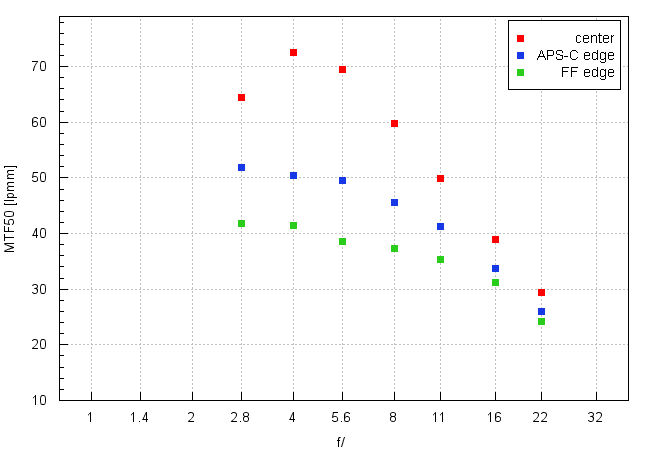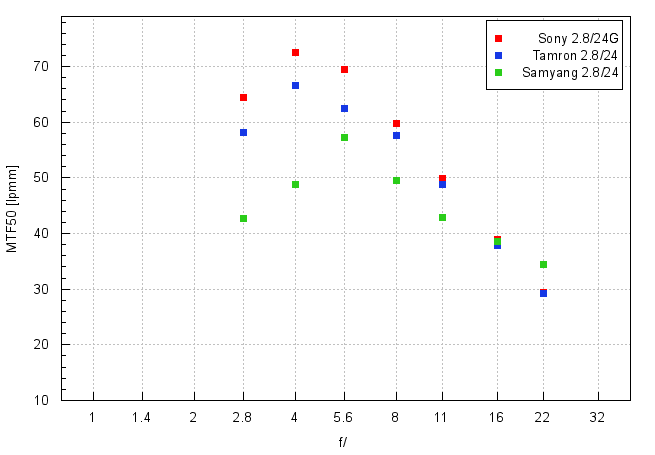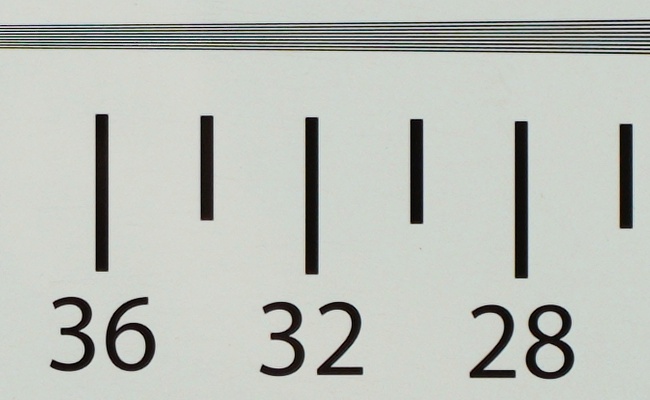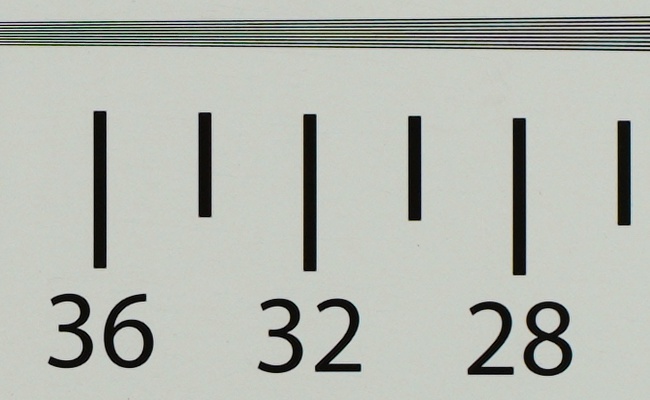Sony FE 24 mm f/2.8 G
4. Image resolution
Let's see how the Sony FE 24 mm f/2.8 G compares – its results in the frame centre and on edges of the APS-C and full frame are presented below.

Please Support UsIf you enjoy our reviews and articles, and you want us to continue our work please, support our website by donating through PayPal. The funds are going to be used for paying our editorial team, renting servers, and equipping our testing studio; only that way we will be able to continue providing you interesting content for free. |
- - - - - - - - - - - - - - - - - - - - - - - - - - - - - - - - - - - - - - - - - - - - - - - -
One glance at the results of the tested lens in the frame centre and you know there will be no complaints in this section. Already at the maximum relative aperture the lens is able to get as high as 64 lpmm and on stopping down it exceeds distinctly 70 lpmm. It's true that this performance is a bit weaker than that of the 2.5/40 model we tested not so long ago but, as we wrote in the introduction, the 70 lpmm level is a value that, metaphorically speaking, is able to sift the grain from the chaff. As you see, the Sony FE 24 mm f/2.8G passed this test without any problems.
The Sony's high image quality is also emphasized by a comparison to the performance of its direct rivals, the Tamron 24 mm f/2.8 Di III OSD M 1:2, and the Samyang AF 24 mm f/2.8 FE. Of course you should also keep in mind the fact that these rivals are almost two times cheaper.

The performance on the edge of the frame is a separate story, though. The lens fares atypically because the best results can be observed not on stopping down but close to the maximum relative aperture. It's a rare thing, appearing when e.g. the course of some of off-axis aberrations is very specific. In this case lateral chromatic aberration increases quite fast on stopping down, limiting efficiently the increase of the vertical component of MTF values – it will be described in more detail in the following chapter.
Still it should be said that, despite an atypical resolution performance, the edge of the APS-C looks sensible – in the aperture range from f/2.8 to f/11.0 you get results that guarantee you completely sharp images. More problems you can notice on the edge of full frame because by f/2.8 and f/4.0 the lens brushes against the decency level and from f/5.6 upwards it even drops below that. As you see, paradoxically, if you want to enjoy sharp images across the frame, it's advisable you don't stop the Sony 2.8/24G down too much.
At the end of this chapter, traditionally, we present crops taken from photos of our resolution testing chart saved in JPEG format alongside RAW files which we used for the analysis above.
| A7R III, JPEG, 24 mm, f/2.8 |
 |
| A7R III, JPEG, 24 mm, f/4.0 |
 |






